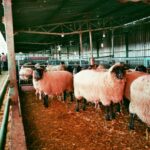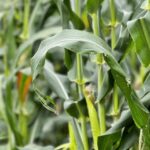Farm equipment is a significant investment for any farmer, and proper maintenance is essential to ensure its longevity, efficiency, and reliability. Whether you’re working with tractors, combines, sprayers, or irrigation systems, taking care of your machinery throughout the year can prevent costly breakdowns and downtime during critical planting, growing, and harvesting periods. In this seasonal guide, we will cover the best practices for maintaining your farm equipment, ensuring optimal performance year-round.
Spring: Preparation for the Planting Season
As the growing season begins, it’s crucial to prepare your equipment for the demands of planting and early crop care. Spring maintenance ensures that your machinery is ready to work efficiently during long hours in the field.
1. Inspect and Clean All Equipment
Before the busy planting season starts, thoroughly inspect and clean all your equipment. Dirt, debris, and residue from the previous season can clog filters, cause overheating, and wear down parts. Clean your machinery after every use to prevent build-up and ensure smoother operation.
2. Check Engine Oil and Fluids
Always check the engine oil and fluid levels, including hydraulic oil, coolant, and transmission fluid, to ensure they’re at the proper levels. Clean and replace any filters that may have become clogged or dirty over the off-season. Regular fluid checks prevent engine wear and overheating during the planting rush.
3. Inspect Tires and Tracks
Examine the tires or tracks on all equipment for signs of wear or damage. Ensure proper inflation, as under- or over-inflated tires can reduce efficiency, damage the soil, and increase fuel consumption. If using tracks, check for wear and alignment.
4. Sharpen Blades and Check Tools
For equipment like planters, cultivators, and mowers, sharpen blades and check tools for damage. Dull blades can cause inefficient planting and uneven cuts, leading to poor crop growth and uneven field conditions. Replace or repair any worn-out components before the planting season begins.
Summer: Mid-Season Maintenance
Summer is the busiest time of year for farmers, with machinery being put to work for planting, irrigation, and maintaining crops. As such, regular maintenance during the season is essential to avoid breakdowns.
1. Monitor Engine Performance
During long hours of operation, engine performance is critical. Regularly check fuel filters, air filters, and radiator levels to ensure efficient engine performance. Clean air filters to reduce strain on the engine, and check the fuel system to ensure there are no blockages or leaks.
2. Inspect Hydraulic Systems
Hydraulic systems are vital for many farming operations, including equipment used for lifting, planting, and applying fertilizers or pesticides. Check hydraulic hoses for wear or leaks and ensure that hydraulic fluid levels are maintained. Hydraulic failures can cause costly downtime if left unchecked.
3. Examine Belts and Chains
Over time, belts and chains can stretch, crack, or break, leading to unexpected failures. Inspect all belts and chains regularly for signs of wear and replace them as needed. Ensure they are properly tensioned to avoid damage and maintain proper machine operation.
4. Grease Moving Parts
Greasing is an essential task to ensure smooth operation and prevent rust or friction on moving parts. Regularly grease all moving components, including the axle, bearings, and joints, to prevent excessive wear and keep your machinery running smoothly.
Fall: Pre-Harvest and Winterization Maintenance
The fall season is a critical time for preparing your equipment for the harvesting period and for the long winter months ahead. Proper fall maintenance ensures that your equipment is ready for the harvest rush and remains in good condition during the off-season.
1. Thoroughly Clean and Inspect
Before harvest begins, clean all your machinery thoroughly to remove any dust, dirt, or crop residue. This not only helps prevent the spread of pests and diseases but also allows you to spot any potential issues before they cause problems during the harvest.
2. Check Fuel Systems and Storage
Fuel systems can be prone to contamination during the off-season, so it’s essential to check fuel filters and storage tanks for debris. Make sure fuel tanks are topped off before winter, and consider adding fuel stabilizers to prevent fuel degradation.
3. Inspect Harvesting Equipment
Harvesting machinery, such as combines and harvesters, undergoes intense wear during the harvest season. Check the threshing system, augers, and grain bins for any damage or wear. Repair or replace parts that could cause delays or malfunctions during harvest.
4. Winterize Engines and Systems
Once harvesting is complete, it’s time to winterize your equipment to protect it during the colder months. Drain any water from the cooling system, flush the fuel system, and add antifreeze to protect engines and hydraulic systems from freezing. Additionally, cover equipment to protect it from the elements during storage.
Winter: Off-Season Maintenance
The winter months often provide a slower time for farming, making it the perfect opportunity for deep maintenance work. Use this time to inspect and perform repairs that are difficult to address during the busy planting and harvesting seasons.
1. Deep Clean and Service Equipment
Perform a more thorough cleaning of your equipment during the winter months. Clean out all parts that may have accumulated dirt, crop residue, or fuel deposits. This includes the engine, hydraulic systems, and cooling systems. Also, perform an in-depth inspection of all components and make necessary repairs or replacements.
2. Check Battery and Electrical Systems
Cold weather can cause electrical systems to fail, so inspect and test batteries to ensure they’re in good condition. Clean any corrosion from battery terminals and check the charging system. If a battery is weak or showing signs of wear, replace it before the next busy season.
3. Review and Order Spare Parts
The off-season is a great time to review your equipment for any parts that may need replacing in the future. Stock up on essential spare parts like belts, filters, spark plugs, and hydraulic hoses, so you’re prepared for the upcoming season.
4. Store Equipment Properly
Proper storage is crucial for maintaining equipment longevity. Store your equipment in a dry, sheltered area to protect it from the elements. Consider investing in protective covers for your machinery to prevent exposure to moisture, which can cause rust and corrosion.
General Best Practices for Year-Round Maintenance
- Keep a Maintenance Log: Track your maintenance activities, including inspections, repairs, and parts replacements. This log helps you stay on top of your equipment’s needs and can be helpful when troubleshooting or planning future maintenance.
- Follow the Manufacturer’s Recommendations: Always refer to the equipment’s user manual for manufacturer-recommended maintenance schedules and guidelines. These recommendations are tailored to optimize the performance and lifespan of your specific equipment.
- Invest in Quality Parts and Fluids: Using high-quality parts and fluids ensures that your equipment operates at peak performance and lasts longer. Opt for the best available options for oil, filters, and spare parts, as these have a direct impact on efficiency and durability.
Maintaining your farm equipment through seasonal upkeep is crucial to ensure that your machinery operates efficiently and reliably throughout the year. By following these best practices and performing regular maintenance, you can prevent unexpected breakdowns, reduce repair costs, and extend the life of your equipment. With the proper care, your farm machinery will remain ready for the planting, growing, and harvesting seasons, helping you achieve the best possible results for your crops and your farm business.
Join 'Farmers Mag' WhatsApp Channel
Get the latest Farming news and tips delivered straight to your WhatsApp
CLICK HERE TO JOIN






